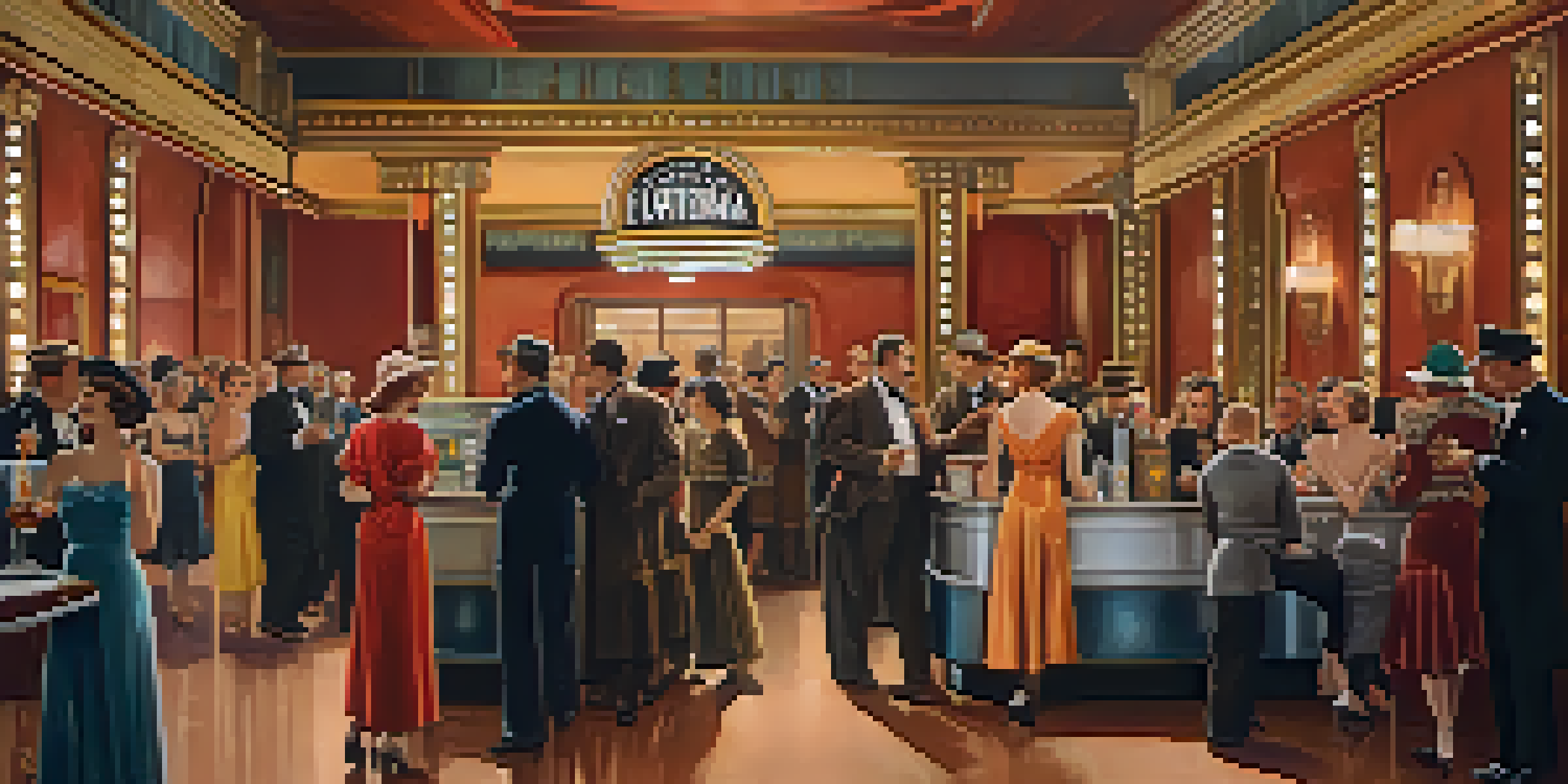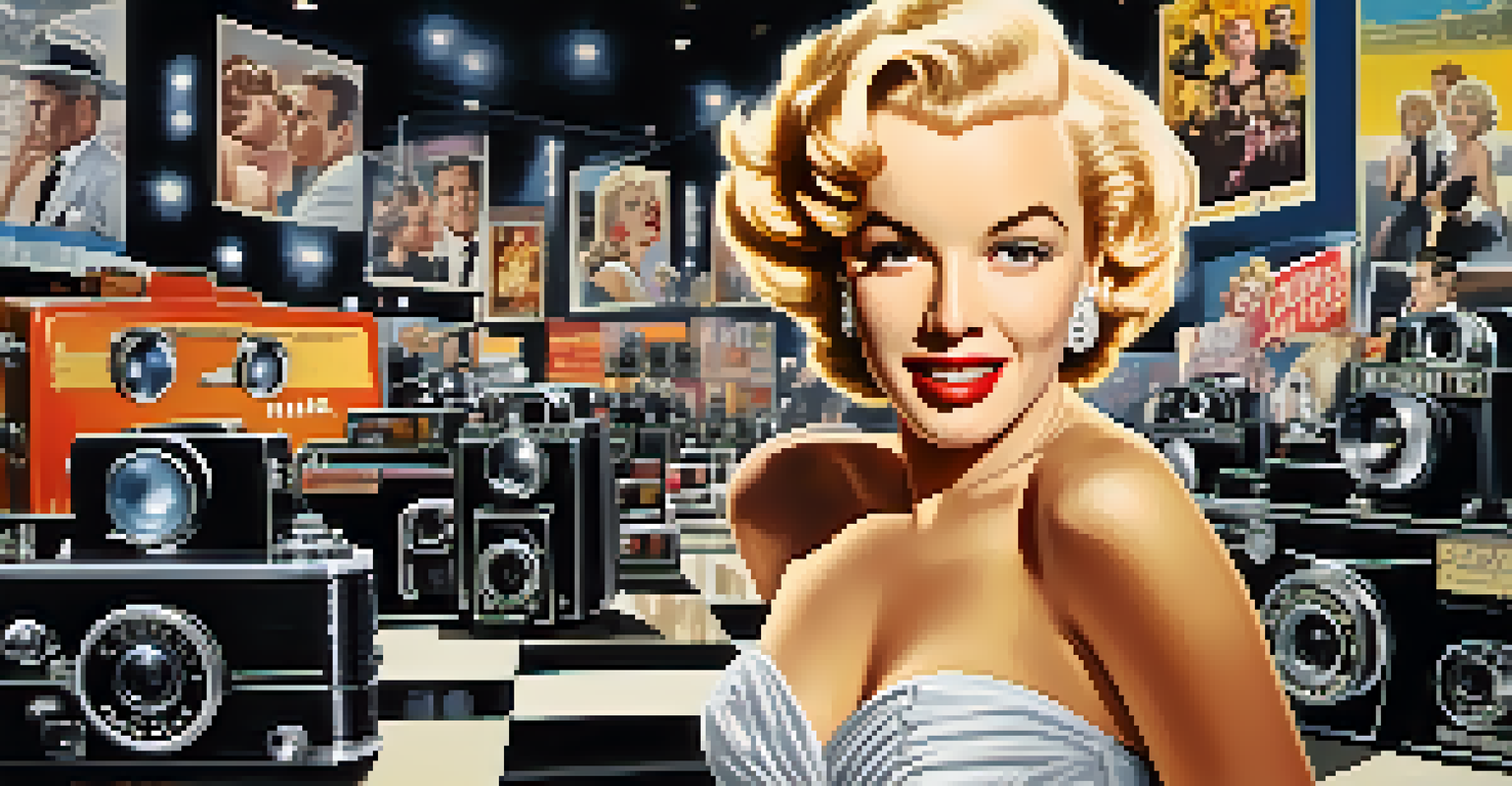The Evolution of Advertising Through Hollywood's Lens

The Birth of Advertising in Early Cinema
In the early 20th century, advertising found its footing in the world of cinema. With the advent of silent films, studios began integrating brand placements subtly into stories. For instance, a character might drink a particular soda, planting the idea in the minds of audiences without overt promotion.
Advertising is fundamentally persuasion and persuasion happens to be not a science, but an art.
This budding relationship between film and advertising was mutually beneficial. Studios gained financial support, while brands enjoyed exposure to large audiences. As films drew viewers into theaters, advertisers recognized the potential of this new medium to reach consumers more effectively than print alone.
As the 1920s rolled in, the rise of 'talkies' allowed for more dynamic advertising techniques. Brands could now use jingles, slogans, and even celebrities to capture viewer attention, setting the stage for a more engaged advertising approach that would evolve over decades.
The Golden Age of Hollywood and Its Impact on Brands
The 1930s to the 1960s marked the Golden Age of Hollywood, a time when films became cultural touchstones. Advertisers took notice and began aligning their products with popular films and stars. For example, actors would endorse products, making them more desirable simply by being associated with a beloved character.

This era showcased the power of celebrity endorsements, as stars like Marilyn Monroe and John Wayne became household names. Their influence extended beyond the big screen, transforming into lucrative advertising campaigns that capitalized on their popularity. This strategy allowed brands to tap into the emotional connection audiences felt with these icons.
Advertising's Evolution with Cinema
From silent films to modern blockbusters, advertising has continuously adapted alongside cinema, utilizing brand placements and celebrity endorsements to resonate with audiences.
As a result, advertising became more glamorous and aspirational. Brands were no longer just selling products; they were selling lifestyles, making consumers aspire to the worlds depicted in films. This shift laid the groundwork for modern advertising strategies that thrive on emotional resonance.
The Rise of Television and Advertising Innovation
With the advent of television in the 1950s, the advertising landscape underwent another significant transformation. Marketers quickly realized that they could reach millions of viewers directly in their homes. This shift encouraged creativity, as advertisers developed memorable commercials to capture attention in a crowded marketplace.
Creativity without strategy is called 'art.' Creativity with strategy is called 'advertising.'
Television commercials became mini-narratives, often featuring storytelling elements reminiscent of film plots. Brands like Coca-Cola and McDonald's capitalized on this trend, creating iconic ads that resonated with audiences. Their commercials often featured catchy jingles and relatable scenarios, making them unforgettable.
Additionally, the ability to measure viewership allowed brands to fine-tune their strategies. Advertisers could analyze which ads performed best, leading to a more targeted approach in crafting campaigns that aligned with consumer preferences. This evolution paved the way for data-driven advertising strategies in the digital age.
The Digital Revolution: A New Era for Advertising
As the internet took center stage in the late 1990s and early 2000s, advertising saw yet another transformation. The digital landscape opened new avenues for brands, shifting focus from traditional media to online platforms. This shift allowed for greater interactivity and engagement with consumers.
Social media platforms emerged as powerful tools for advertising, allowing brands to connect with audiences on a personal level. Companies began to craft campaigns that encouraged user participation, often blurring the lines between advertising and entertainment. Viral trends and memes became a new form of promotion, showcasing how quickly messages could spread.
Television: A Game-Changer for Ads
The rise of television transformed advertising, allowing brands to create memorable narratives that connected directly with consumers in their homes.
Moreover, digital analytics offered insights that were previously unattainable. Brands could track engagement in real-time, adjusting campaigns based on immediate feedback. This dynamic environment marked a significant departure from traditional advertising methods, making every click count.
The Role of Influencers in Shaping Advertising Trends
In the wake of social media, influencers emerged as a new breed of marketers. These individuals, often with large followings, became trusted voices for brands seeking authentic connections with consumers. By leveraging their personal brands, influencers could promote products in a way that felt genuine and relatable.
This shift in advertising strategy has led to a rise in sponsored content, where influencers create posts that seamlessly integrate products into their lifestyles. This approach resonates with audiences, who often prefer recommendations from people they trust over traditional advertisements. It’s a prime example of how authenticity can drive consumer engagement.
As a result, brands are increasingly collaborating with influencers to amplify their messages. This partnership not only increases visibility but also fosters community engagement, as followers often feel a personal connection to the influencers they admire. This evolution continues to shape how advertising is executed in the digital age.
Hollywood's Influence on Advertising Ethics and Standards
As advertising evolved alongside Hollywood, ethical considerations began to emerge. The portrayal of products and messages in films and ads became scrutinized, leading to discussions about responsible advertising practices. This is especially pertinent in addressing issues such as body image and diversity.
Hollywood has had a significant role in highlighting these issues, prompting brands to adopt more inclusive and responsible advertising strategies. Campaigns now often reflect a broader range of identities and experiences, aligning with social movements and consumer expectations.
Influencers Redefine Marketing Today
The emergence of influencers has shifted advertising strategies, enabling brands to foster authentic connections with consumers through relatable content.
Moreover, regulatory bodies have established guidelines to ensure that advertising remains truthful and does not mislead consumers. This evolution highlights the importance of accountability in advertising, as brands recognize their role in shaping societal perceptions and values.
The Future of Advertising Through Hollywood's Lens
As we look ahead, the intersection of advertising and Hollywood continues to evolve. Emerging technologies such as virtual reality (VR) and augmented reality (AR) are set to redefine how brands engage with consumers. Imagine stepping into a film world where you can interact with products in a virtual space!
Additionally, the focus on sustainability and ethical consumerism is shaping advertising narratives. Brands are increasingly emphasizing their commitment to social and environmental responsibility, reflecting a shift in consumer values. This trend presents an opportunity for storytelling that resonates deeply with audiences seeking authenticity.

In this ever-changing landscape, the lessons learned from Hollywood's evolution will play a crucial role. As advertisers continue to adapt to new technologies and consumer expectations, the fusion of creativity and strategy will remain at the heart of impactful advertising.